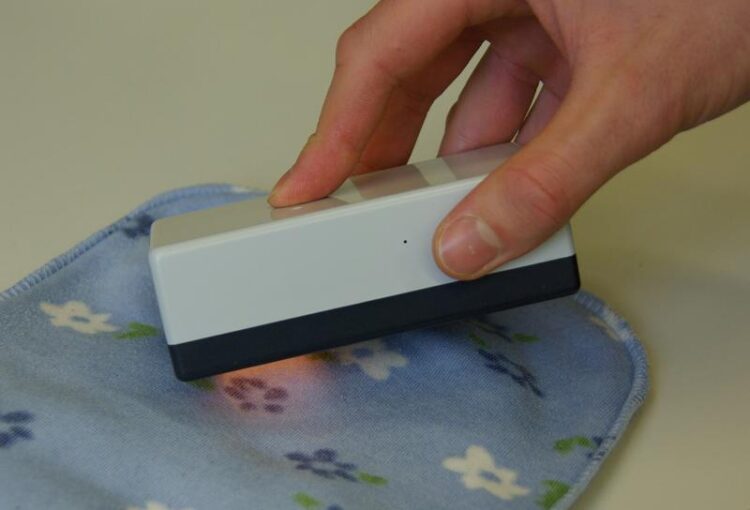Easy detection of materials

With the help of this handy spectrometer, it is possible to determine the material of a particular product.
Landshut University of Applied Sciences
A team at Landshut University of Applied Sciences has developed a low-cost, mobile near-infra-red spectrometer which provides information about different substances; the goal is its further development up to and including the classification of substances.
Sugar or sweetener? Cotton or wool? Fake or genuine?
At first glance, the average consumer finds it hard to tell the substances that food or textile products actually contain. Equipment which uses infra-red measurement to identify materials can provide quick answers to these questions, though. Such equipment is otherwise known as a spectrometer. Spectrometers are equipped with sensors and use invisible infra-red radiation to provide information about a variety of substances which are found, in clothing, plastic packaging and food, for instance. The disadvantage of these devices is that they are relatively expensive and not therefore affordable for most people. However, as part of a bachelor’s dissertation together with student Arne Kulinna, Prof. Dr. Artem Ivanov, has recently developed a mobile spectrometer which is very inexpensive in comparison with those currently available on the market.
A low-cost prototype
While the professor created the hardware, Kulinna designed the necessary software, which controls the measurements and sends the data via Bluetooth. He has also developed an app which displays the measured data on a PC or smart-phone. “Most spectrometers currently available on the market cost around 2,000 to 3,000 Euros. To enable their widespread use, they will have to become significantly less expensive,” explains Ivanov. The system which he has designed as a one-off gadget together with Kulinna, only costs around 300 Euros, in comparison. “We were also able to achieve a signal quality that in some respects exceeds that of the module of the sensor manufacturer,” reports Ivanov, gladly. In the initial step, the two researchers developed a prototype which displays the different spectra. The team uses these to identify the specific substances.
The development continues
In the next step, a more detailed evaluation has been planned. There are likely to be more dissertations on the hardware at the university, for example. The device is also going to serve as a platform for project work so as to advance the topic of data analysis and classification. The system can also be rolled out to other spectral ranges by combining several sensors and with the use of adapted software.
Quick, mobile, straightforward
“Our ultimate goal is to be able to make conclusive statements about the authenticity of products or the condition of food,” says Ivanov. With the help of this inexpensive mobile device, it would then be possible to quickly and easily determine whether a silk blouse is actually made of pure silk or viscose, whether sugar or sweetener has been used in certain foods, and what kind of plastic a yoghurt pot is made from. “Identifying different types of plastic could also make the subsequent sorting during the recycling process easier, for example,” Ivanov reflects. The professor is convinced: “There is a lot of potential in this area – at both the technological and social levels. This is an area in which we have a lot of work to do with our students.”
Media Contact
All latest news from the category: Power and Electrical Engineering
This topic covers issues related to energy generation, conversion, transportation and consumption and how the industry is addressing the challenge of energy efficiency in general.
innovations-report provides in-depth and informative reports and articles on subjects ranging from wind energy, fuel cell technology, solar energy, geothermal energy, petroleum, gas, nuclear engineering, alternative energy and energy efficiency to fusion, hydrogen and superconductor technologies.
Newest articles

Pinpointing hydrogen isotopes in titanium hydride nanofilms
Although it is the smallest and lightest atom, hydrogen can have a big impact by infiltrating other materials and affecting their properties, such as superconductivity and metal-insulator-transitions. Now, researchers from…

A new way of entangling light and sound
For a wide variety of emerging quantum technologies, such as secure quantum communications and quantum computing, quantum entanglement is a prerequisite. Scientists at the Max-Planck-Institute for the Science of Light…

Telescope for NASA’s Roman Mission complete, delivered to Goddard
NASA’s Nancy Grace Roman Space Telescope is one giant step closer to unlocking the mysteries of the universe. The mission has now received its final major delivery: the Optical Telescope…



